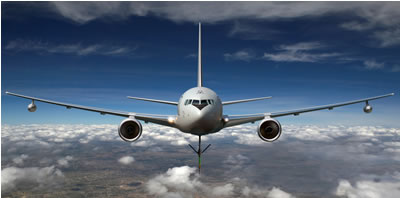The U.S. Air Force released yesterday (Jan. 30, 2007) the Request for Proposal for the KC-X Aerial Refueling Aircraft, officially launching the Air Force’s highest priority acquisition program in recent years. According to Sue C. Payton, the Air Force’s senior acquisition executive, the RFP reflects the Air Force effort to minimize development risk among differing aircraft manufacturers and types. The KC-X program is the first of three acquisition programs the Air Force will need to replace the entire fleet of aging KC-135 Stratotankers, which have been in service for more than 50 years. The KC-X program will be worth $30-40 billion. The projected life cycle cost of the new tankers has been estimated at $200 billion. The Air Force plans spending about $8.2 billion until 2010 on development and testing, and expects the first squadron of 16 aircraft to become operational by 2013. Two teams are running for the program, one led by Boeing, offering the KC-767 and the other, led by Northrop Grumman teamed with EADS offering a militarized version of the Airbus A330 designated KC-30.
Boeing formally announced it will offer an advanced tanker based on the KC-767-200 Long Range Freighter for the USAF KC-X program. Boeing’s Global Tanker Team producing the KC-767 Advanced Tanker includes Smiths Aerospace, Rockwell Collins, Vought Aircraft Industries, Honeywell and the newest member – Spirit AeroSystems. AMong the innovations included in the aircraft are advanced fly-by-wire boom, new wing refueling pods, a centerline hose drum refueling unit, and advanced 777 commercial digital flight deck and a third-generation remote vision refueling system.

The primary mission of the KC-X will be to provide aerial refueling to United States military and coalition aircraft in the war on terrorism and other missions. However, the Air Force also intends to take full advantage of the other capabilities inherent in the platform, and make it an integral part of the Defense Transportation System.

“The Air Force aerial tanker is essential to all Air Force and joint global operations,” said Lt. Gen. Donald Hoffman, the military deputy for acquisition. “It allows the joint force to project mobility, strike and surveillance forces anywhere and anytime without relying on intermediate bases for refueling.” The RFP identified nine primary key performance parameters: addressing air refueling capabilities, including fuel, receiving fuel by aerial refueling from other platforms, and range at least equal to those of the existing KC-135. A new capability addressing joint operations will be the provisioning for a multi-point refueling system, to support Navy and allied aircraft. “Tankers put the ‘global’ in global power” Said General Hoffman. In addition to its primary refueling capability, KC-X will be able to provide airlift capability and have the means to network into the information available in the battle space. The aircraft will be equipped with advanced avionics suite, compliant to Communication, Navigation, Surveillance/Air Traffic Management (CNS/ATM); self protection and force protection means will include defensive systems and electro-magnetic pulse hardening and chemical/biological protection measures.
 Boeing is currently building four KC-767 tankers each for Italy and Japan. The aircraft has logged more than 200 flights and 600 hours during its flight test program. It is equipped with two wing mounted aerial refueling pod systems and an advanced boom system, derived from existing designs. The new boom can transfer 900 U.S. gallons (3,400 liters) of fuel per minute. Providing more precise and responsive controls to the operator, the boom automatically corrects its position to reduce potential damage to the receiver aircraft.
Boeing is currently building four KC-767 tankers each for Italy and Japan. The aircraft has logged more than 200 flights and 600 hours during its flight test program. It is equipped with two wing mounted aerial refueling pod systems and an advanced boom system, derived from existing designs. The new boom can transfer 900 U.S. gallons (3,400 liters) of fuel per minute. Providing more precise and responsive controls to the operator, the boom automatically corrects its position to reduce potential damage to the receiver aircraft.
The KC-30 is expected to use the new Air Refueling Boom System (ARBS) developed by EADS. It also will soon equip the fleet of five EADS KC-30B tanker aircraft ordered by the Royal Australian Air Force. With a maximum nominal fuel flow rate of 1,200 U.S. gallons per minute, the ARBS utilizes fly-by-wire controls and features an automatic load alleviation system that provides a larger refueling envelope and enhanced controllability. The system’s all electric design significantly reduces traditional failure rates and subsequent down times. Using a 3D-vision surveillance system, the boom operator can remotely control ARBS operations from the cockpit during air-to-air refueling.
The Royal Australian Air Force’s first KC-30B Multi-Role Tanker Transport currently is undergoing its outfitting process, during which the aircraft will be equipped with a centerline ARBS, a pair of under-wing pods with hose and drogue refueling systems (the same fourth-generation model series as currently in operational service on the U.S. Air Force MC-130 and the EADS A310 tankers flown by Canada and Germany), and an electronic warfare self-protection suite for defense against surface-to-air missiles.




















